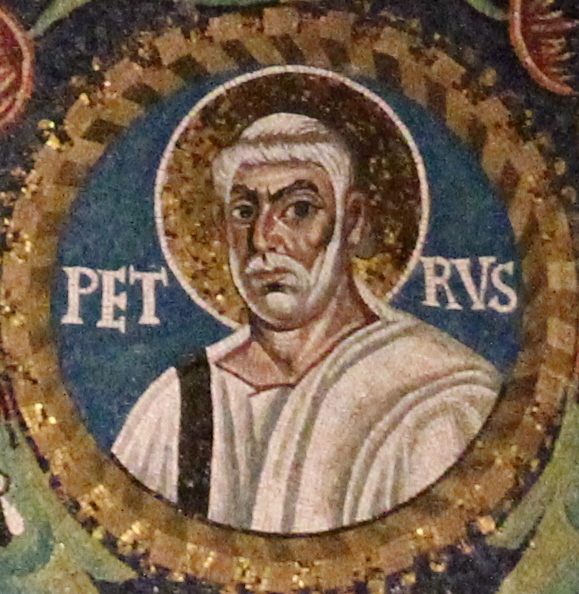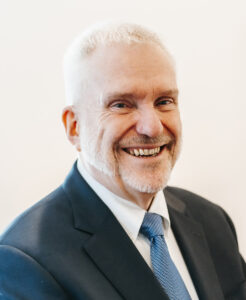
August 27, 2023
Revised Common Lectionary
Exodus 1:8-2:10 or Isaiah 51:1-6
Psalm 124 or Psalm 138
Romans 12:1-8
Matthew 16:13-20
Lectionary for Mass (RC)
Isaiah 22:19-23
Psalm 138:1-2, 2-3, 6, 8 (8bc)
Romans 11:33-36
Matthew 16:13-20
There sure are a lot of home renovation programs on TV these days. Frequently they begin by showing a house that has fallen into disrepair or has been abused over time, and then continue by following the process to rethink it, reclaim it, and turn it into something completely new.
Along the way to house beautiful, designers and contractors often encounter serious obstacles. One of the most difficult and expensive of these problems is a sinking foundation. Even if the rest of the home is in good condition, the entire building is in danger if the foundation is unstable.
In today’s Gospel reading, Jesus speaks about building his church on a solid foundation. He first questions the disciples about his identity: “Who do people say that the Son of Man is? . . . But who do you say that I am?” (Mt 16:13,15) Simon Peter, who had only recently begun sinking into the water when his faith began to waver, blurts out one of the most powerful confessions of faith found anywhere in the New Testament: “You are the Messiah, the Son of the living God” (Mt 16:16).
Here, Jesus declares, is that solid foundation on which his church will be built: “I tell you, you are Peter, and on this rock I will build my church” (Mt 16:18). For many centuries now, Christians have argued about the meaning of this verse. How does Jesus’s designation of Peter as the “rock” extend into the unfolding development of the church, its ministries, and leadership? This is a difficult and important question for Christians seeking unity, but here I would like to focus on some other crucial lessons that flow from today’s Gospel reading.
First, this story suggests that we need the church. Connection to the larger community of disciples is integral to embracing the gospel message. In a time when an increasing number of people identify as “nones,” Jesus’s statement about building his church on rock reminds us that we can live out our calling only in relation to others who profess a common faith in Christ. We are called to discipleship not in isolation but as part of a flesh-and-blood community of believers.
Second, the church is built on a shared faith that Jesus Christ is “the Messiah, the Son of the living God” (Mt 16:16). In order to attract new members, many churches have turned to marketing techniques and introduced new features such as coffee bars and yoga classes. There’s nothing wrong with any of these, of course, but everything that the church does must be understood in relation to its mission is to proclaim the good news of Christ. The church is more than a club or a social group; it is a community rooted in faith.
Third, the church belongs to Christ. In today’s Gospel, Jesus tells Peter that he is “rock,” and “on this rock I will build my church” (Mt 16:18). We are not the creators of the church, but rather its building materials, the “living stones” that are “built into a spiritual house” (1 Pt :5). It is “built upon the foundation of the apostles and prophets, with Christ Jesus himself as the cornerstone” (Eph 2:20). John XXIII, who served as pope for just five years (1958-1963), after working as best he could, is said to have concluded each day with this brief prayer: “It’s your Church, God. I’m going to bed.”
Finally, we can draw both perspective and comfort from the designation of Peter, who frequently missed the mark in his call to be a follower of Jesus, as the “rock.” In the very next passage of Matthew’s Gospel, Peter will take offense when Jesus tells the disciples that he will suffer, die, and be raised again. Jesus rebukes him sternly, calling him “Satan” and a “hindrance” (Mt 16:23). In this house of living stones, both leaders and members are human, weak, and imperfect. We draw our strength and our life from Christ the cornerstone.
A Hymn for Today: “Christ Is Made the Sure Foundation”
Throughout the world, there are buildings dedicated to the gathering of the believing community and the worship of God. These buildings serve as a visual and spatial metaphor for the church itself, the community of disciples who are living stones built on the foundation of Christ himself and bound together by a common faith.
This classic text is a translation and adaptation by John Mason Neale of an ancient Latin hymn. While intended as the song of the Christian assembly as it gathers in a building set aside for worship, the first stanza gives powerful poetic expression to the nature of the church community as a spiritual edifice with Christ as its foundation. Read more here.
While Neale’s text was originally sung to a plainsong tune, it is today most commonly sung to WESTMINSTER ABBEY, a stately tune by English composer Henry Purcell. Listen here to a recording of this hymn as it was sung by the congregation during an ecumenical celebration at Westminster Abbey during the 2010 visit of Pope Benedict XVI.
Christ is made the sure foundation,
Christ, the head and cornerstone,
chosen of the Lord and precious,
binding all the church in one;
holy Zion’s help forever,
and our confidence alone.
To this temple, where we call you,
come, O Lord of hosts, and stay;
come, with all your lovingkindness;
hear your people as we pray,
and your fullest benediction
shed within these walls today.
Here bestow on all your servants
what they seek from you to gain;
what they gain from you, forever
with the blessed to retain;
and hereafter in your glory
evermore with you to reign.
Laud and honor to the Father,
laud and honor to the Son,
laud and honor to the Spirit,
ever three and ever one:
one in might and one in glory
while unending ages run!
Text: Angularis fundamentum, 11th cent. trans. John Mason Neale, 1818-1866, alt.
Tune: WESTMINSTER ABBEY, from an anthem of Henry Purcell, 1659-1695, Ernest Hawkins, 1807-1868
Image Credit: Peter the Apostle, detail of the mosaic in the Basilica of San Vitale, Ravenna, 6th century, Gianni Careddu
 “Word and Song: A Lectionary Reflection” is written by the Executive Director of The Hymn Society, Rev. Dr. Mike McMahon. For his full bio, click here and scroll down to the “staff” section.
“Word and Song: A Lectionary Reflection” is written by the Executive Director of The Hymn Society, Rev. Dr. Mike McMahon. For his full bio, click here and scroll down to the “staff” section.
To receive these weekly reflections by email, please send a message to office@thehymnsociety.org and type “Lectionary” in the subject line.
